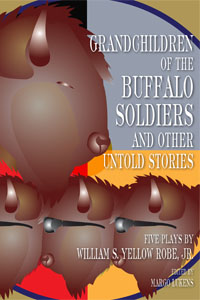“A Being of a New World:” The Ambiguity of Mixed Blood in Pauline Johnson’s “My Mother”
MELUS
Volume 27, Number 3, Native American Literature (Autumn, 2002)
pages 43-56
Margo Lukens, Associate Professor of English
University of Maine
Studying mixed-blood/Métis history reveals that an overwhelming number of unions between Europeans and Native people happened between a European man and a Native woman. Sylvia Van Kirk has illustrated this demographic pattern in her work on the importance of Native women to the development of the fur trade in Canada; others, such as Jennifer Brown, corroborate the story of the creation of the Métis people by men from France or the British Isles and women from “the country,” members of Native groups who were instrumental in helping white men survive and establish their link to North American land. A specific mythology describing the men and women of these cross-cultural unions, and their children as well, grew in the imaginations of the Europeans intent upon describing their own occupation of the land and what they came to conceive of as their Manifest Destiny to spread the civilization they knew over the face of the continent. The mythology typified the Native women of these unions as drudges and as sexual temptresses, ready to cleave to their white spouses or melt inconspicuously back into their tribes once their husbands left them behind to care for their unacknowledged and genetically compromised children. The European men could, in this mythology, choose to return to French or English wives without penalty for their foray “into the country;” only those who chose to thrust their mixed-blood children upon society’s notice or “squaw-men” who remained with Native wives for life risked social disapproval and marginaliation.
What, then, of the handful of people experiencing unions with the genders reversed? Perhaps because of the Europeans’ inability to imagine these unions, they are largely undescribed by the mythology; perhaps because historical circumstance brought European men to America in large numbers without European women as companions, there was little necessity for a descriptive mythology to arise, except perhaps as a prohibitive tool; perhaps the fear of exposing their women to the attentions of men from outside shaped the European colonial project to be a male journey into an unknown and feminine landscape. Whatever the reasons, no comparable mythology existed for the union of a Native man and European woman. (2) In the work of Pauline Johnson, daughter of a Mohawk man and an English woman, we can see the tension generated by an attempt to create such a mythology of self-identity.
Pauline Johnson was born in 1861 on the Six Nations Reserve in the Grand River valley near Brantford, Ontario, the daughter of George Henry Martin Johnson, a Mohawk chief who was one-quarter Dutch, and Emily Susanna Howells, whose family had emigrated from England when she was eight years old. Because Canadian law identified as Indians women whose fathers or husbands were Indians, her status was Indian even though five of her eight great-grandparents were Europeans. She grew up in an English-style household on the Reserve, where she was educated partly by an English governess at home and partly at the Reserve school, idealizing the Indianness of her father and learning to claim the Mohawk part of her heritage with pride; as her biographer Betty Keller says, Pauline Johnson “credited everything in which she excelled to her Indian blood” (54)…
Read or purchase the article here.
